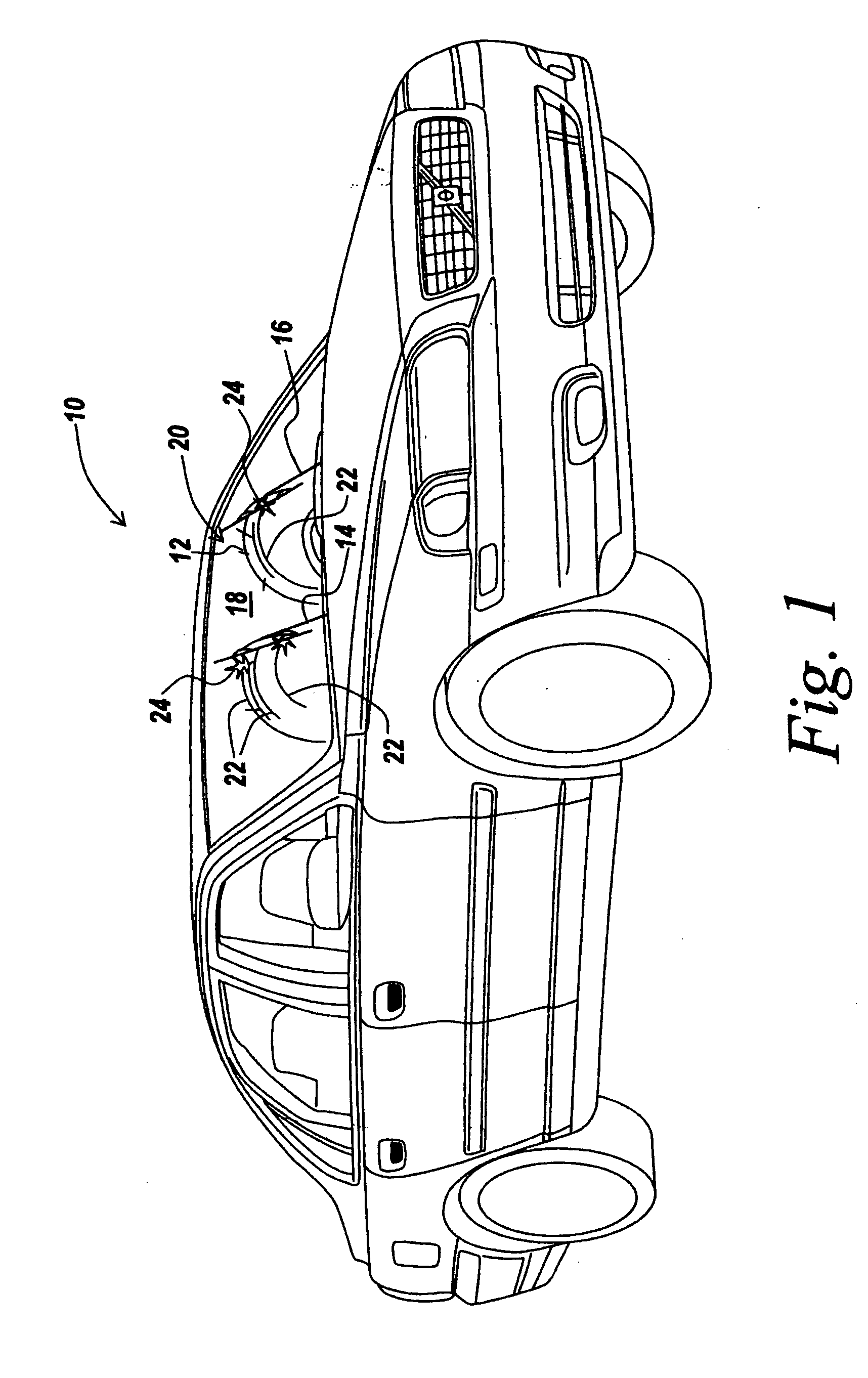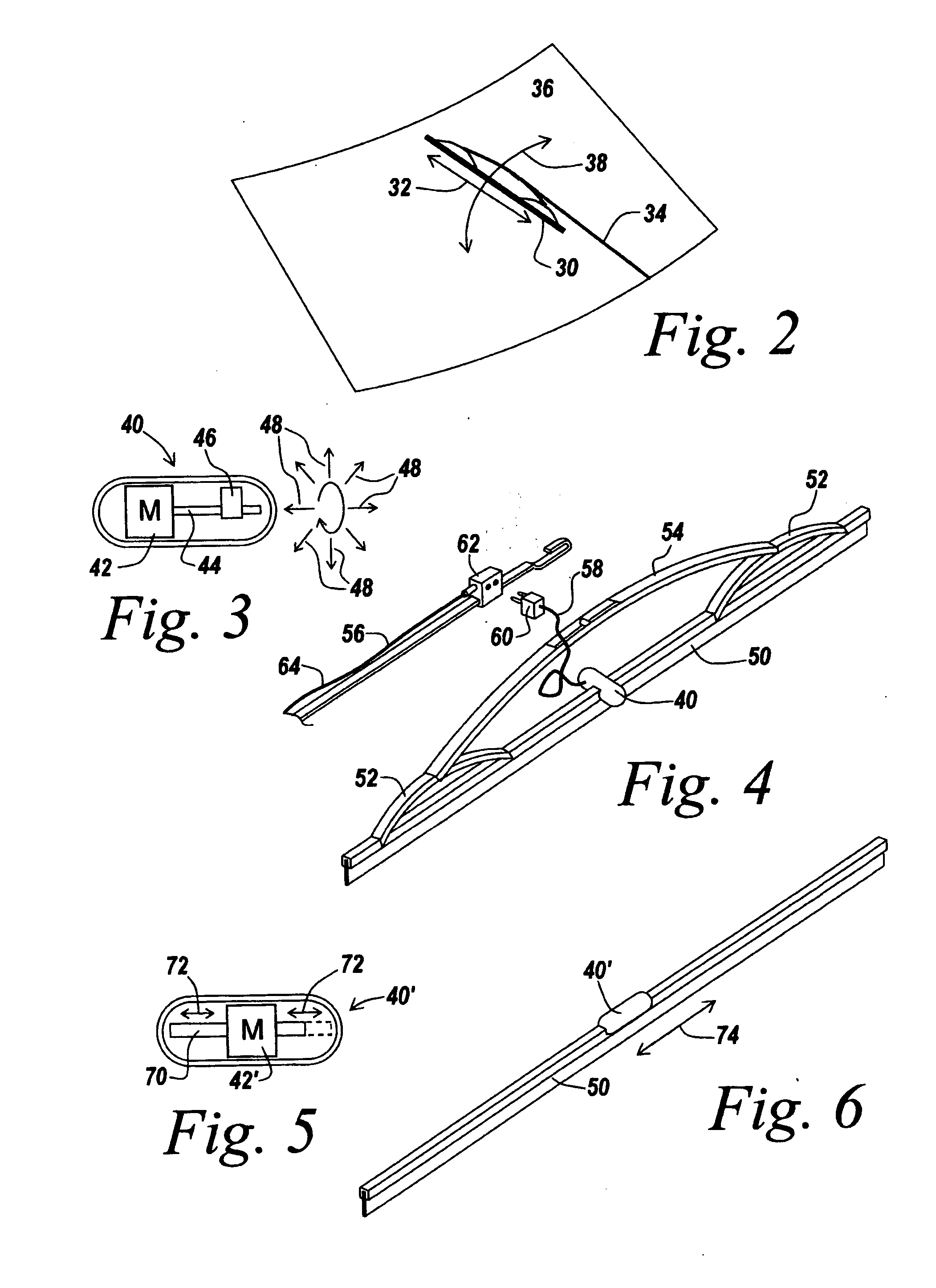Method and apparatus for improving windshield wiper performance using a vibrating windshield wiper blade
a technology of windshield wiper and blade, which is applied in the field of windshield cleaning, can solve the problems of reducing the efficiency of windshield wiper for wiping or squeegeeing out water on the windshield surface, serrations on the blade edge, and inability to clean the windshield wiper, so as to improve the wiping capability of windshield wiper, less wear, and uniform water removal
- Summary
- Abstract
- Description
- Claims
- Application Information
AI Technical Summary
Benefits of technology
Problems solved by technology
Method used
Image
Examples
Embodiment Construction
[0044] As illustrated in FIG. 1, a vehicle 10 is provided with a pair of windshield wiper blades 14 and 16, which sweep across the surface 18 of a windshield 20. Here it can be seen that various smears 22 occur when the windshield wiper blade, in an attempt to remove water on the surface of the windshield, either has an irregular edge due to wear or due to the presence of debris between the windshield surface and the wiper blade as illustrated by leaves 24; or is caused by insufficient liquid or moisture on the windshield, which causes the streaking.
[0045] Referring now to FIG. 2 and in accordance with the subject invention, windshield wiper blade 30 is made to oscillate in the direction of double-ended arrow 32, which is along the longitudinal axis of the blade, as the corresponding windshield wiper 34 sweeps across a windshield 36 as illustrated by double-ended arrow 38. It is this longitudinal vibration or oscillation of the blade along its longitudinal centerline that provides ...
PUM
 Login to View More
Login to View More Abstract
Description
Claims
Application Information
 Login to View More
Login to View More - R&D
- Intellectual Property
- Life Sciences
- Materials
- Tech Scout
- Unparalleled Data Quality
- Higher Quality Content
- 60% Fewer Hallucinations
Browse by: Latest US Patents, China's latest patents, Technical Efficacy Thesaurus, Application Domain, Technology Topic, Popular Technical Reports.
© 2025 PatSnap. All rights reserved.Legal|Privacy policy|Modern Slavery Act Transparency Statement|Sitemap|About US| Contact US: help@patsnap.com



